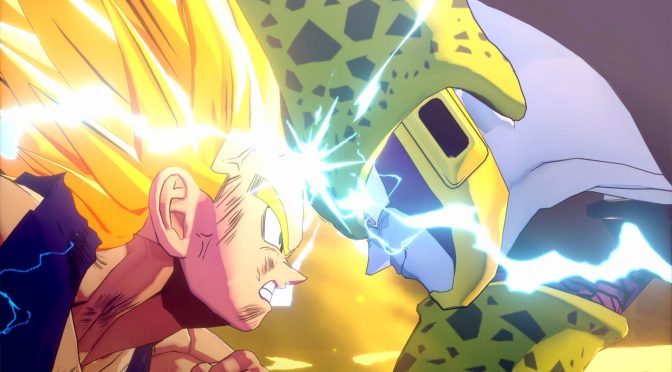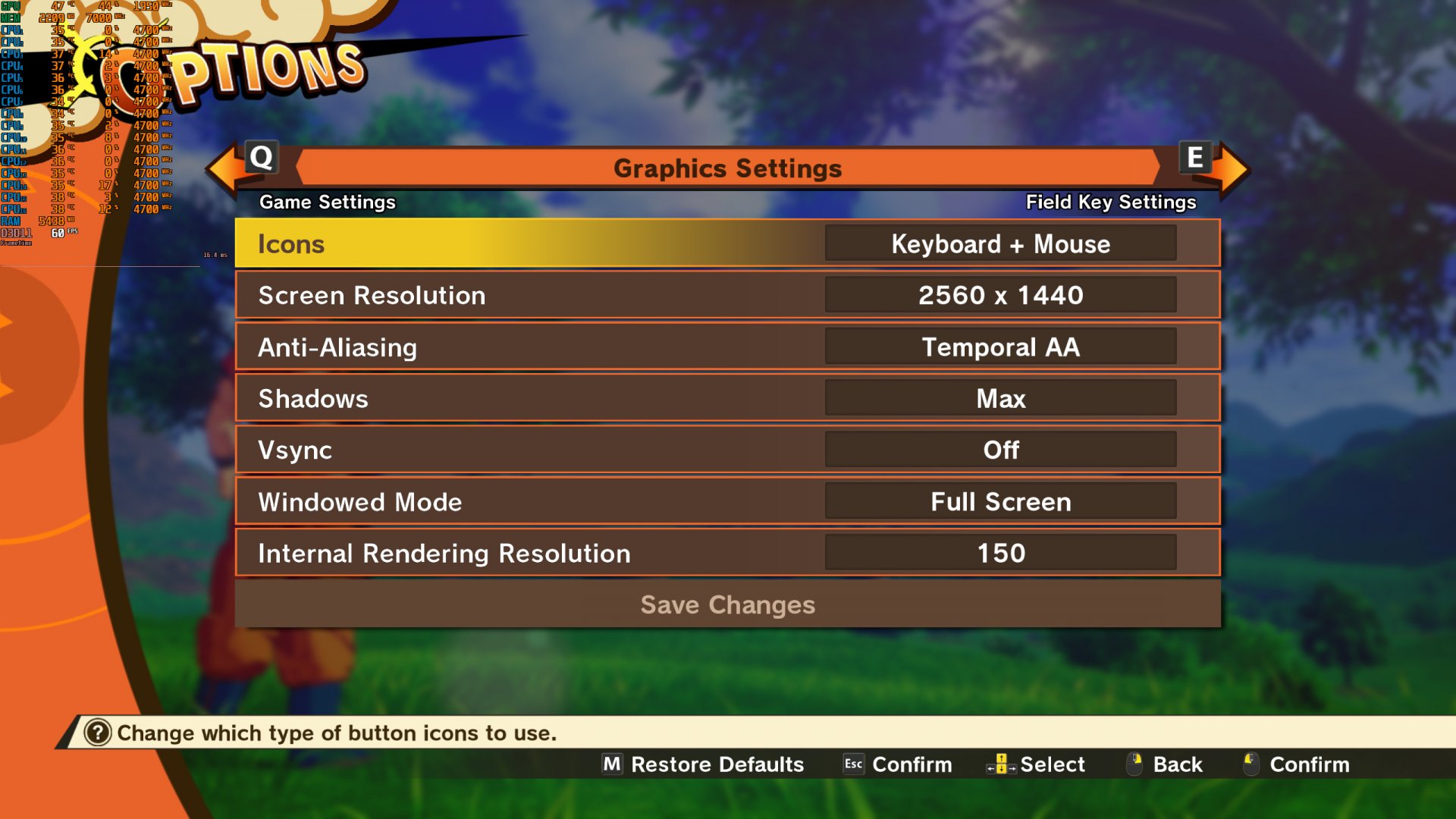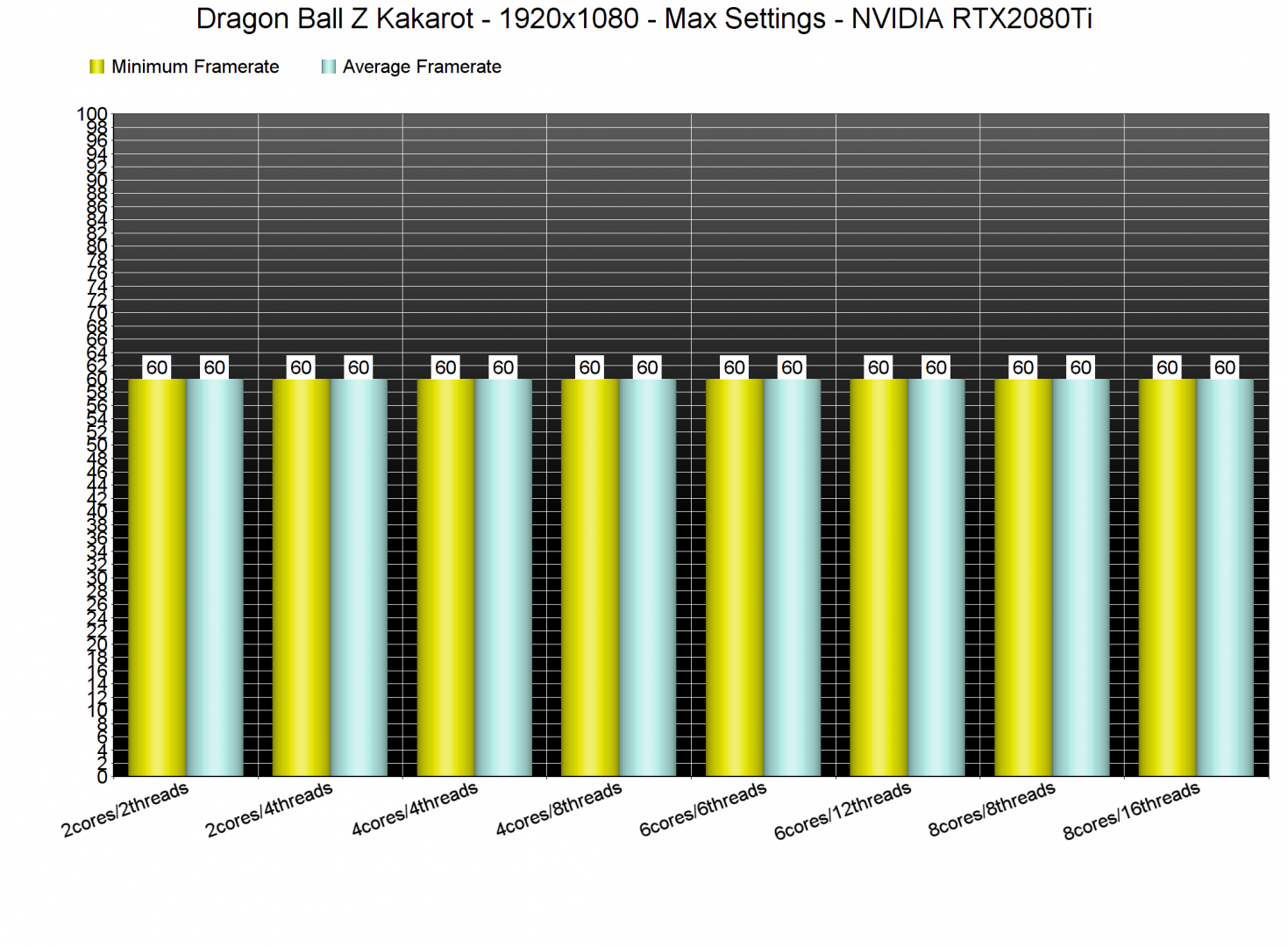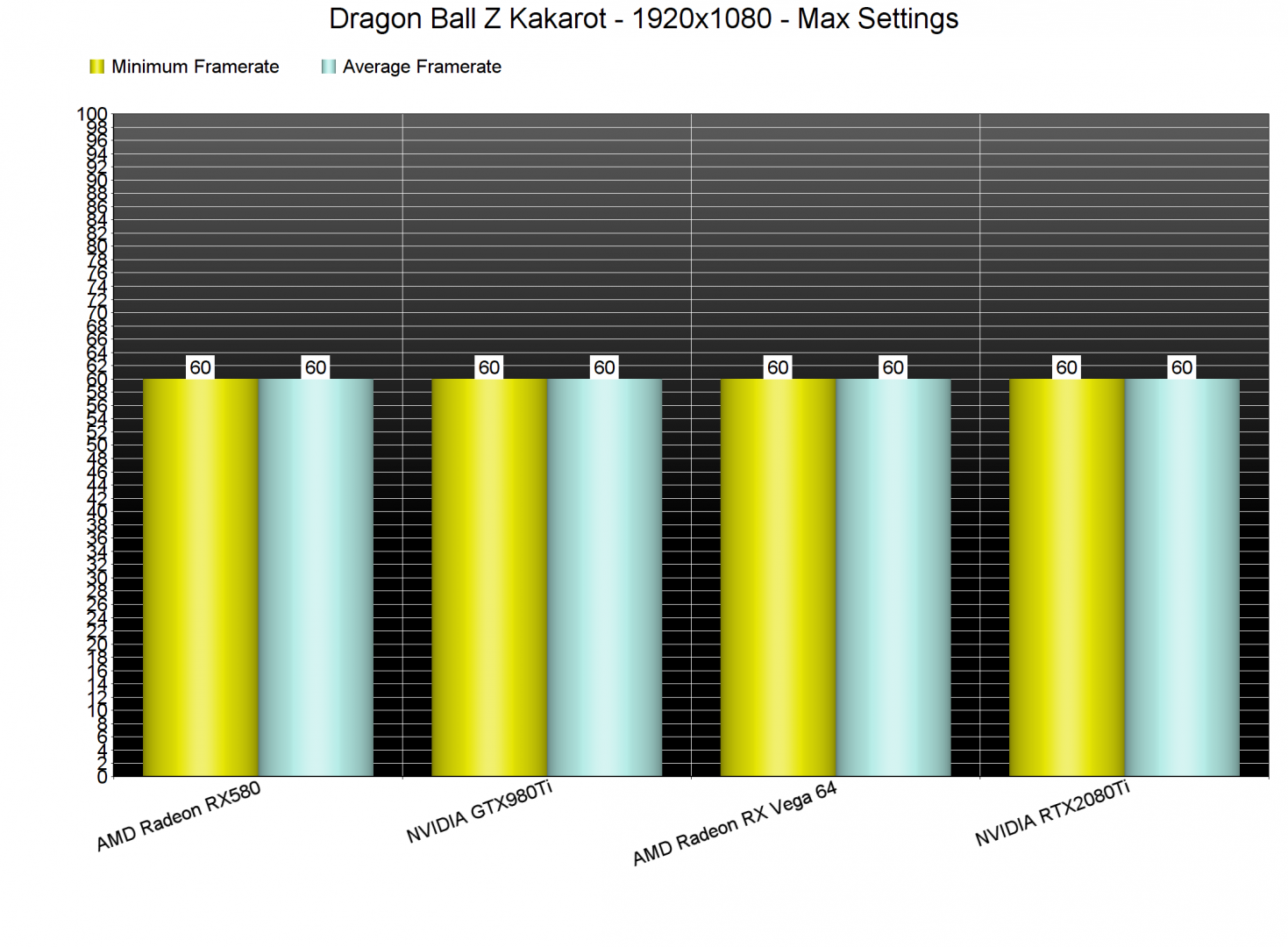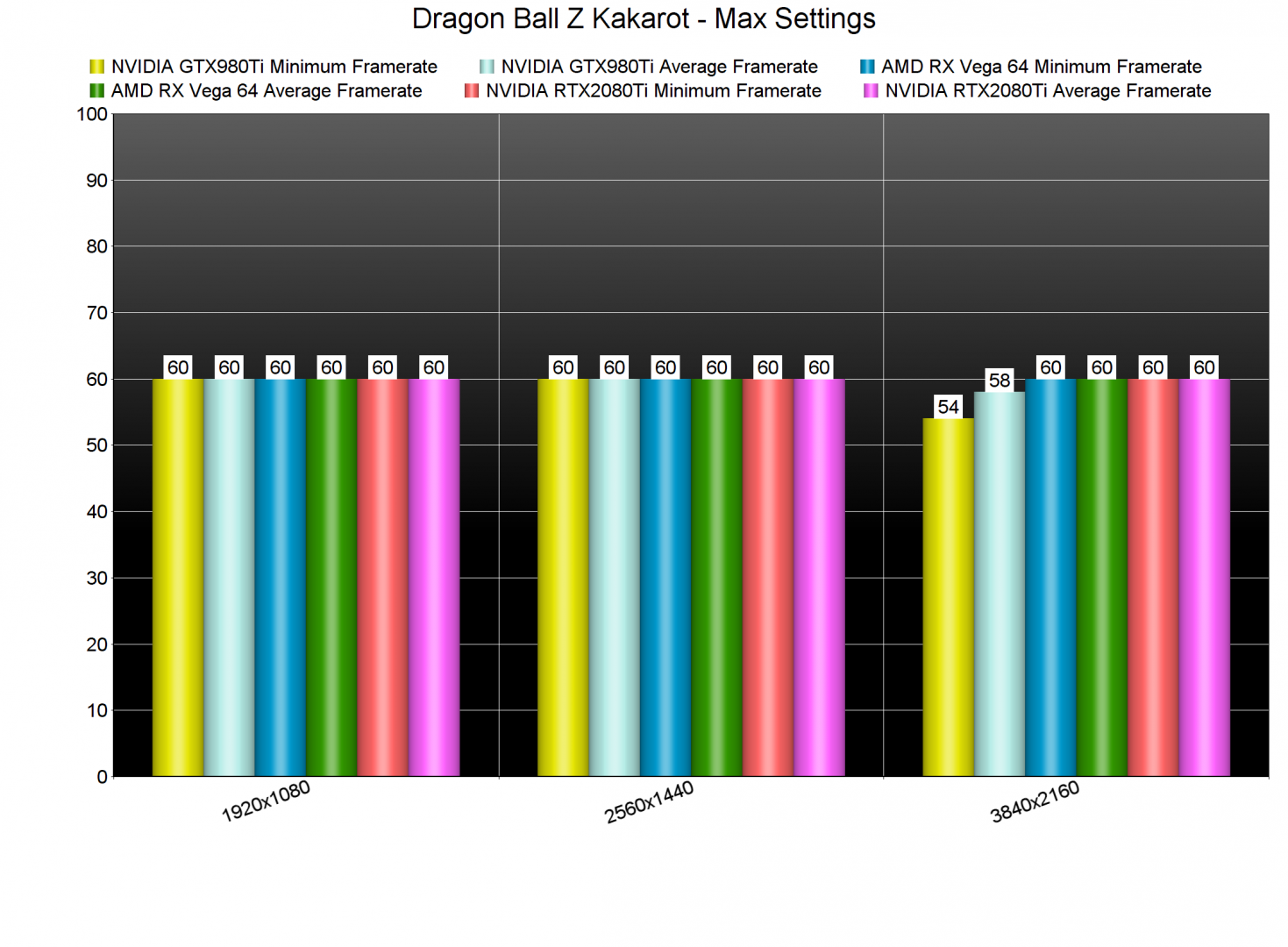Dragon Ball Z Kakarot is brand new action adventure RPG that will release tomorrow on the PC. Bandai Namco has provided us with a review code, so it’s time to benchmark this new DBZ game and see how it performs on the PC platform.
For this PC Performance Analysis, we used an Intel i9 9900K with 16GB of DDR4 at 3600Mhz, AMD’s Radeon RX580 and RX Vega 64, NVIDIA’s RTX 2080Ti and GTX980Ti. We also used Windows 10 64-bit, the GeForce driver 441.87 and the Radeon Software Adrenalin 2020 Edition 20.1.2 drivers.
CyberConnect2 has added very few graphics settings to tweak. PC gamers can only adjust the quality of Anti-Aliasing and Shadows. There aren’t any settings for Textures or Effects. Moreover, the game does not use advanced high quality features, such as Tessellation or Ray Tracing. Thankfully, though, there is an option for proper K&M on-screen indicators. There is also a Rendering Resolution Scaling setting.
Even though Dragon Ball Z Kakarot uses Unreal Engine 4, we were unable to unlock its framerate. As such, the game was locked at 60fps. And, to be honest, we didn’t really mind that specific framerate cap. What we really disliked, though, were some 30fps cut-scenes. Dragon Ball Z Kakarot features both 30fps and 60fps cut-scenes. My guess is that the 30fps cut-scenes were too GPU-heavy for consoles, which is why the team decided to lock them at 30fps. Still, this cap is ridiculous for the PC version, and make those cut-scenes feel a bit sluggish.
Dragon Ball Z Kakarot does not require a high-end PC system. In order to find out how the game scales on multiple CPU threads, we simulated a dual-core, a quad-core and a hexa-core CPU. Thankfully, even our simulated dual-core system was able to provide a constant 60fps experience.
The game also does not require a high-end GPU. At 1080p/Max settings, all of our GPUs were able to provide a 60fps experience. Since there is no option to adjust the quality of Textures, we did not test our GTX690 (which only has 2GB per GPU core).
We were also able to get a 60fps experience at 2560×1440 on all of our three top GPUs. As for 4K, our GTX980Ti came close to a 60fps experience. On the other hand, our RTX2080Ti and Vega 64 had no trouble at all running the game.
Graphics wise, Dragon Ball Z Kakarot looks great, mainly due to its art style. This does feel like a DBZ game and it’s a joy to explore its environments. Still, and while its 3D models look great, it’s not as incredible as Dragon Ball FighterZ. Its lighting system is also dated, and there are numerous low-resolution textures. There are also noticeable pop-ins of objects when you fly around. To be honest, this looks like a polished version of some of the fan-made Unreal Engine 4 projects we’ve been sharing. Don’t get me wrong, it does not look bad. However, there was room for improvement, especially since the game is not taxing at all on high-end GPUs, even in 4K resolutions.
In conclusion, Dragon Ball Z Kakarot runs great on the PC platform. Thankfully, game does not require a high-end CPU or GPU. CyberConnect2 has also included proper K&M on-screen indicators, and we did not experience any mouse acceleration or smoothing issues. The game’s executable file is also 70MB, meaning that it does not use Denuvo (at least in the review build).
Enjoy!

John is the founder and Editor in Chief at DSOGaming. He is a PC gaming fan and highly supports the modding and indie communities. Before creating DSOGaming, John worked on numerous gaming websites. While he is a die-hard PC gamer, his gaming roots can be found on consoles. John loved – and still does – the 16-bit consoles, and considers SNES to be one of the best consoles. Still, the PC platform won him over consoles. That was mainly due to 3DFX and its iconic dedicated 3D accelerator graphics card, Voodoo 2. John has also written a higher degree thesis on the “The Evolution of PC graphics cards.”
Contact: Email

